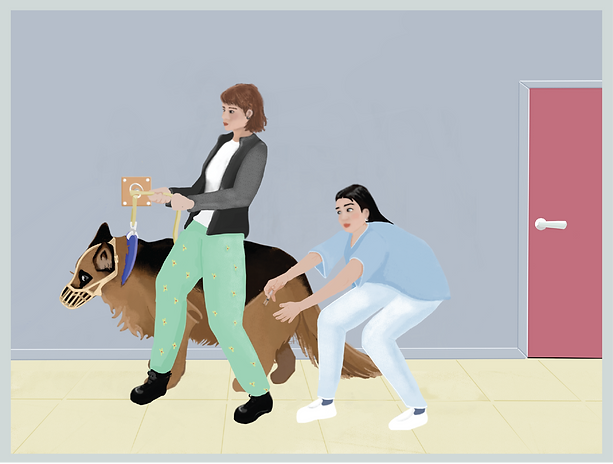Collaborators
Jasmine Chevallier
Emmanuel Gaultier
Illustrator
Menelia Vasilopoulou Kampitsi
Content:
Part 1: Psychophysiology
Part 2: Psychopathology
Part 3: Psychopharmacology
Part 4: Psychotherapy

Les troubles du comportement des animaux sont l’une des principales difficultés de la médecine vétérinaire.
Cet ouvrage, richement illustré, se veut à la fois exhaustif et accessible, permettant ainsi à de nombreux publics d’accéder à une discipline trop souvent considérée comme complexe. Il s’adresse aussi bien à l’étudiant vétérinaire voulant s’y initier, au vétérinaire praticien désireux de s’appuyer au quotidien sur un ouvrage de référence, au futur spécialiste cherchant à accéder à des connaissances pointues qu’aux autres professionnels du chien, curieux de découvrir une approche complémentaire.
Animal behavioral disorders represent important difficulties experienced by veterinary medicine.
In this regard, this greatly illustrated book intends to be both, exhaustive and accessible, to allow many audiences to access a field that is usually considered complex. It is aimed to the veterinary students wishing to learn more about it, as well as to the veterinary practitioners wishing to rely on a reference book on a daily basis, to the future specialists seeking access to advanced knowledge and to other dog professionals who are curious to discover a complementary approach.
Click here if you wish to buy the book!
Below you can find some of the numerous illustrations made for the book


Les différentes aires sensorielles du cerveau du chien
Figure 2.41.


Substance grise et substance blanche de l’encéphale (en coupe transversale).
Figure 2.5
Vue en 3D du cerveau du chien
Partie 1 Chapitre 2

Le neurone et ses connexions
Figure 2.15
La synapse
Figure 2.21




Les zones excrétant des phéromones chez le chien
Figure 1.13
Postures lors de l’accouplement chez le chien
Figure 3.13

La réponse rapide au stress à travers les axes HPA et SNA
Figure 3.5



Position de sécurité
Figure 31.5
Immobilisation d’urgence d’un chien très agressif.
Figure 31.9

Protocole recommandé pour s’expliquer avec un enfant en présence d’un chien.
Figure 30.22

